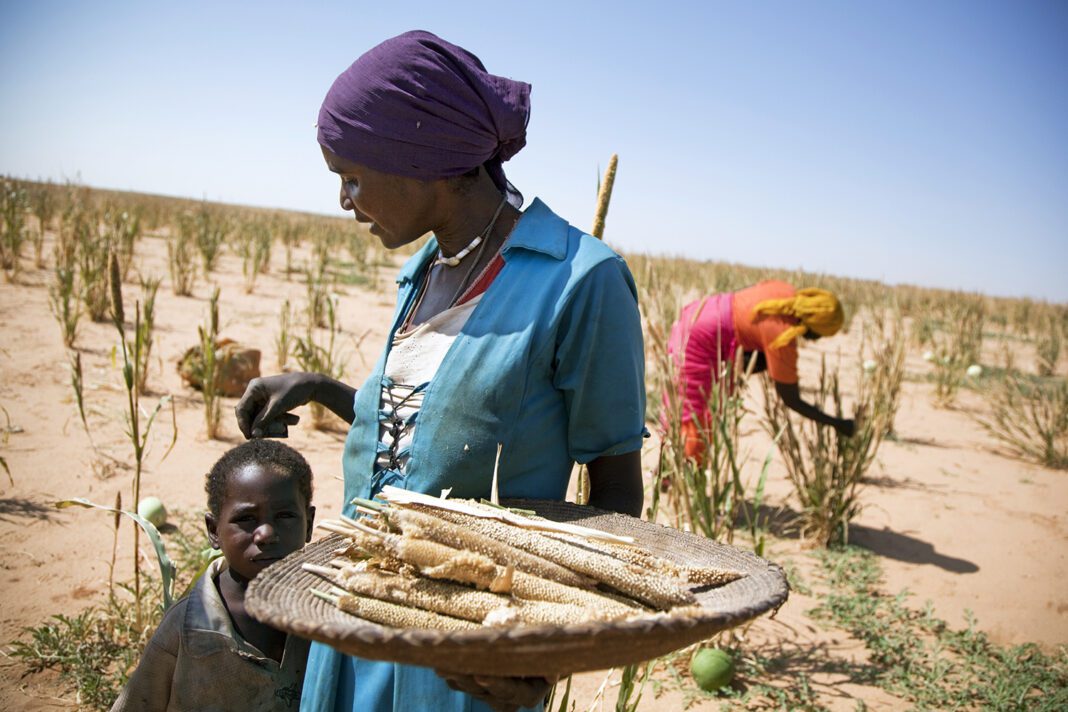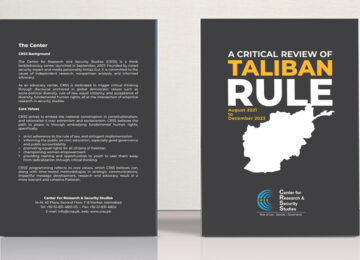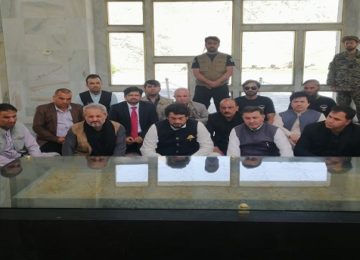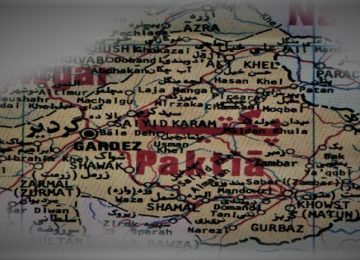Affected most due to climate change, women’s rights and well-being are overlooked in climate policy-making on national and international levels. Already subject to financial, social, and cultural barriers, climate change has added to the miseries of women around the world. Climate policies should be at the heart of gender equality goals and vice versa.
Pakistan is ranked first in Asia according to a recent assessment of 87 low- and middle-income countries on the CGIAR researchers’ hotspot index for gender inequality, agriculture, and climate change. These hotspots are defined as areas where climate hazards, women’s exposure to climate hazards because of their involvement in agriculture, and women’s vulnerability due to prevailing gender inequalities intersect.
Women constitute 49% of the country’s population but do not have equal access to resources or opportunities. “This inequality contributes to their vulnerability,” says Aisha Khan, head of the Mountain and Glacier Protection Organization and Civil Society Coalition for Climate Change. Across the globe, women are reported to have been major and more destitute victims of climatic variations and disasters. The World Bank says that children’s education, particularly girls, is at risk in the aftermath of the disaster. “When children are lost and found in camps, they marry them off – that is one less mouth to feed”, says Humayun, who works at Pakistan’s National Disaster Management Authority (NDMA). On top of all this, Humayun points out, “in chaotic situations, gender-based violence increases”.
Last June, a report submitted at the Bonn Climate Change Conference underpinned some compelling findings vis-à-vis the magnitude of the crisis and what it entails for women around the globe.
For instance, due to harsh weather events, many males are moving from rural to urban regions in several African countries in search of employment, putting women in control of the home and the land even though they may not have the necessary legal or social capacity to do so.
The report also emphasized how gender-based violence has increased in response to climate-related crises. The Geneva Centre for Security Sector Governance says that gender-based violence is widespread in war zones that are also more likely to experience extreme weather conditions. For instance, due to the effects of climate change, environmental degradation, and conflict, women and girls in Colombia, Mali, and Yemen are more vulnerable to gender-based violence. In many communities, child marriage, regarded as a type of gender-based violence, has been seen as a way to cope with calamity. In countries such as Bangladesh, Ethiopia, and Kenya, Child marriage is a coping means to obtain money or property and make up for losses incurred as a result of climate-related catastrophes like drought, frequent flooding, and more severe storms.
While climate change is detrimental to women’s and girls’ agency and security, on the whole, it primarily affects their physical, mental, and nutritional needs.
In the 2010 floods in the Sindh province of Pakistan, there were 1.5 million internally displaced persons at the time, and 49 percent of them were women. In the flood-affected areas, there were 381 maternal deaths for every 100,000 live births. The United Nations Population Fund reported that 650,000 pregnant women were living in Pakistan’s flood-affected districts in August 2022. At that point, the disaster partially destroyed or damaged over 1,000 health institutions in Sindh and 198 in the Balochistan province in southwest Pakistan; the situation worsened during the following months.
Besides, climate disasters are proven to create limited access to clean water, hygiene facilities, and proper menstrual products for women and girls to manage menstrual hygiene effectively. Raheema Panhwar, the provincial coordinator for WaterAid, a non-profit group that works in the area of sanitation and hygiene, says that while the floods inflicted pain and misery across communities, it was the women who often suffered the most. “Many girls face trauma and anxiety, particularly those who started their periods for the first time. They feel shame and fear because they don’t have any knowledge of how to manage their periods. And there is no adequate support from the family due to circumstances,” she said.
Agriculture and food systems are at high risk too because of women’s involvement in the processes, and hence could further fuel the gender gap. Women smallholder farmers are more susceptible than males to climate shocks and stressors since they typically depend more on agriculture and natural resources and don’t have as many different sources of income. Women’s capacity to react to, adapt to, or reduce the effects of climate change is hampered by structural gender disparities. Women typically have fewer and lower-value assets, as well as limited access to land, capital, labor, agricultural inputs, and social and institutional networks. Women’s access to and use of climate-smart technologies is limited by social norms and gender roles that restrict their agency at the home and community levels.
Women farmers in Pakistan are particularly heavily struck by the recent floods due to a mix of climate dangers, restrictive gender norms, and a strong reliance on agriculture. About 7.2 million women are working in agriculture in Pakistan, making it the country’s largest employer of female workers. But the majority of their employment is still unofficial, unrecognized, unpaid, and undervalued. An investigation at the provincial level identified Balochistan, Punjab, and Sindh as the country’s hotspots. In these areas, women farmers produce an enormous quantity of rice and oil seeds. They are frequently the only ones in charge of weeding, cleaning, and storing seeds, as well as dairy farming. This puts them at risk of suffering under current floods and future climate disasters.
CGIAR’s climate–agriculture–gender inequality hotspot index notes that African and Asian countries are the inequity hotspots. The table below presents part of the hotspot ranking. For instance, Gabon is the ‘hottest’ as it scores the highest on the index. The ‘Coolest’ countries are the Dominican Republic and El Salvador. The methodology was applied at a sub-national level to four relatively hot, data-rich countries, including Mali and Zambia in Africa, and the ‘hottest’ Asian countries, namely Pakistan and Bangladesh.

It is apt to infer that women are unjustly impacted due to an unwarranted rise in duties as well as economic, social, and cultural constraints. Every single day, women and girls around the world spend 200 million hours, or 22,800 years, gathering water, according to a 2016 UNICEF assessment. Women’s workload is increased when they must travel farther to collect water, and they run a higher chance of being harassed and subjected to sexual assault. According to the International Union for the Conservation of Nature, women and children have a 14 times greater risk of dying in catastrophes than males do.
According to a report released in September 2022 by the UN Environment Programme, UN Women, and the International Centre for Integrated Mountain Development (ICIMOD), understanding gender equality and social inclusion is essential to understanding how well people can adapt to and cope with the effects of climate change.
In emerging economies, women make up about half of the agricultural labor force. Women can boost their agricultural production by 20 to 30% when given equal access to resources as males. According to the UN, this increase in productivity increases overall agricultural output by 2.5 to 4 percent and can also contribute to a 12 to 17 percent decrease in world hunger. Countries and communities profit much from investing in women and girls. Studies suggest that countries with strong levels of female parliamentary representation ratify international environmental treaties more frequently and effectively.
In addition, women frequently lead efforts to reduce disaster risk, serve as first responders in community responses to natural disasters, and aid in post-disaster recovery by attending to their families’ immediate needs and fostering a sense of community. We can create stronger, more resilient communities that are better prepared to tackle the challenges of climate change by including women in community planning and disaster response initiatives.
Women and girls make up 50% of the global population, but when it comes to climate change, they are frequently left out of the discussion. We need women, in all their diversity, involved at all levels – from climate negotiations to boardrooms to forests and fields, especially in sectors and regions hard hit by the effects of climate change. Indigenous women, in particular, have been at the forefront of environmental preservation and possess invaluable knowledge and expertise that may support resilience-building and assist lower greenhouse gas emissions. We can make everyone’s future more sustainable and egalitarian by involving more women in climate action.
Addressing inequality is the only way forward. In climate-focused initiatives, where gender is generally neglected, gender dynamics are prominent. According to experts, because climate change institutions continue to be predominately male, they tend to define concerns primarily in masculinist terms. Masculinist discourses impact the politics of climate change, says Pease. The Sustainable Development Goals can be met as well as other goals, such as reducing poverty and preserving the environment, by investing in gender equality and women’s empowerment. We may also address women’s rights and promote more gender equality by approaching the issue of climate change via a gender lens.
3-4-2023
Courtesy Matrix Media
By Elsa Imdad








